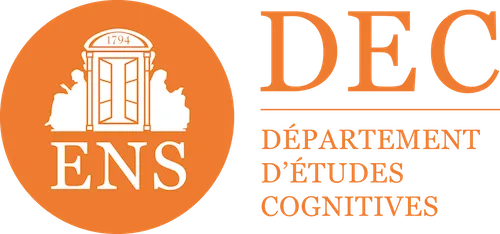

How to build effective onboarding: strategies and techniques
Onboarding, traditionally considered a simple formality, is in fact a crucial step in building a committed and productive workforce. In the age of digital transformation and with the emergence of advanced eLearning platforms like Didask, it is time to reconsider our approach to onboarding. This article explores how to effectively integrate new hires into a company by using innovative strategies, relying on educational artificial intelligence, and creating immersive and personalized learning experiences.
Rethinking onboarding: a strategic challenge
Onboarding is a strategic investment for businesses that want to cultivate a workforce that is competent, committed and aligned with their goals. It is a particular period where both recruits and businesses (and not only one or the other) must learn rationally to prepare for a fruitful collaboration. While this finding is no longer controversial, many challenges remain on the ground, for various reasons.
The importance of content quality
We can't say it enough: The quality of the content of onboarding systems is essential to ensure the successful integration of new hires. By “content” here we mean the content and the form of all the supports deployed. Poor or unsuitable content can, for example, lead to early disengagement or a drop in productivity, or even a non-increase in the future if the recruit is thus poorly trained during their first steps.
If we look at what is happening in many organizations, this content is often passive (documents, slides, videos, etc.). However, as we like to point out at Didask (DNA cognitive sciences obliges), Exposing to content is just informing... and informing is not training, far from it!
The design time challenge
We agree, designing an onboarding program can be extremely time-consuming, for the team in charge as well as for all contributors such as business experts on this or that subject of the system. Moreover, this challenge is often exacerbated by the complexity of the information to be transmitted (how to do it when you are not an educational engineer yourself) and the need for constant updates (your products and processes are evolving, your onboarding must follow). The time invested in design must therefore be reduced and result in real added value for employees and the company.

How to build an effective onboarding system in 2024?
Here we are in the thick of the matter. If onboarding is a decisive moment in a recruit's journey, and if its quality directly resonates with the productivity, integration and retention of talent within the organization, then how can you avoid the pitfalls of inoperative onboarding that leaves your employees at a standstill and your business at a standstill?
Here are some strategies drawn from the four corners of innovative pedagogy and contemporary technology, as well as from our experience in this field at Didask.
The classic onboarding stumbles
Many companies entrust their newcomers with a heap of videos, e-learning modules and documents, leaving them with the burden of self-training. The practice is time consuming and often not very effective. Passive training, without interactions or practical applications, engender cognitive overload and leave little room for the active assimilation of the practical knowledge necessary for operational purposes in the field. Use sparingly.
Rely on the right LMS for structured and interactive learning
And yes, the Learning Management System (or LMS) is the backbone of all successful onboarding, organizing and delivering content in an interactive and measurable way. Without it, it is difficult to obtain consistency in your paths, a global vision and especially to get out of it in the middle of a multitude of content scattered all over the place. A robust and intuitive LMS transforms the onboarding experience in a structured journey, guiding new hires through clear steps, self-assessments, and constructive feedback.
E-learning at the service of efficiency
Onboarding is above all a period of training, which is far from being limited to top-down transmission in the classroom. Understanding a corporate culture is also training. Discovering an organization chart is also training. Control the legal risks of your new sector of activity, just as much! We therefore understand here the essential place of e-learning, already mentioned earlier when talking about LMS.
In our specific onboarding context, e-learning should not be considered as a simple digital transposition of old training manuals. On the contrary, it is a channel with enormous potential, which well used can create a revolution in skills acquisition, which, when executed well, capitalizes on technology to promote knowledge engagement, retention, and application. Using e-learning to create realistic simulations, relevant practical cases, with a trial-error-feedback logic is very effective in strengthening learning and taking care of your integrations (see our article Learning by trial and error: unleash the potential of feedback).
Counterintuitive but effective: Less can be more
It might seem counterintuitive to reduce the amount of content in onboarding courses. However, focusing your efforts on the core competencies and core values of your business, using targeted and active teaching methods, can often result in a better return on investment. Quality over quantity encourages practical mastery and rapid familiarization with the company's DNA. So ask yourself (or ask your designers to do it) the question of The need for this or that concept for this or that recruit. For example, does a new employee in the accounting department need to know in detail the specificities of all your products? Probably not, contrary to the commercial news. The most innovative LMSs, like Didask, greatly facilitate this work of relevant reduction.
The winning recipe: AI at the service of onboarding
As one could imagine, AI brings its share of benefits to onboarding, for administrators, designers and the recruits themselves. But not all LMS AIs are the same, and it is important to rely on an educational AI, that is to say capable to absorb pedagogical complexity and not just produce content like a ChatGPT would do for example.
At Didask, our educational AI is presented as an innovative engine for the development of efficient and tailor-made onboardings and it intervenes at several levels.
First of all, Didask's educational AI takes care of the raw content provided by your experts for convert into interactive learning paths and engaging. Our digital alchemist identifies the most essential concepts to granularize your subject accordingly. Then, for each granule, he recommends the most appropriate pedagogical modality based on research in cognitive sciences. It thus distills the wisdom of your experts into structured educational activities oriented towards clear objectives, thus ensuring that learning is as impactful as it is relevant.
Then, the Didask AI facilitates granular learning based on specific learning goals, while offering adaptive learning methods (see our article on adaptive learning) to adapt the content to the needs and pace of each learner. This personalization reinforces commitment and ensures that each recruit receives the attention they need for a successful integration.
Finally, based on accumulated data, AI generates personalized feedback and recommendations, acting as a virtual mentor who constantly guides and supports employees in their career path. This approach makes it possible to accelerate the development of skills and to maximize the ROI of onboarding for the company.
As you will have understood, it is thanks to the intelligent integration of the principles of cognitive science that Didask educational AI allows everyone to create a truly learner-centered experience, here your new hires, proving that investing in a sophisticated LMS is not just about technology, but an essential business strategy for modern businesses.
Conclusion: Rethinking onboarding for successful integration
Onboarding training is more than an introduction, it is the foundation of the relationship between your company and its future strengths. Having a powerful LMS, exploiting e-learning strategically and adopting innovations such as AI are decisive steps. Regardless of the size of your business, whether it is an SME or an ETI, these solutions increase the return on investment and create a positive and impacting first business experience.
Is your onboarding ready for the challenge of efficiency?
Make an appointment directly with our eLearning experts for a demo or simply more information.












